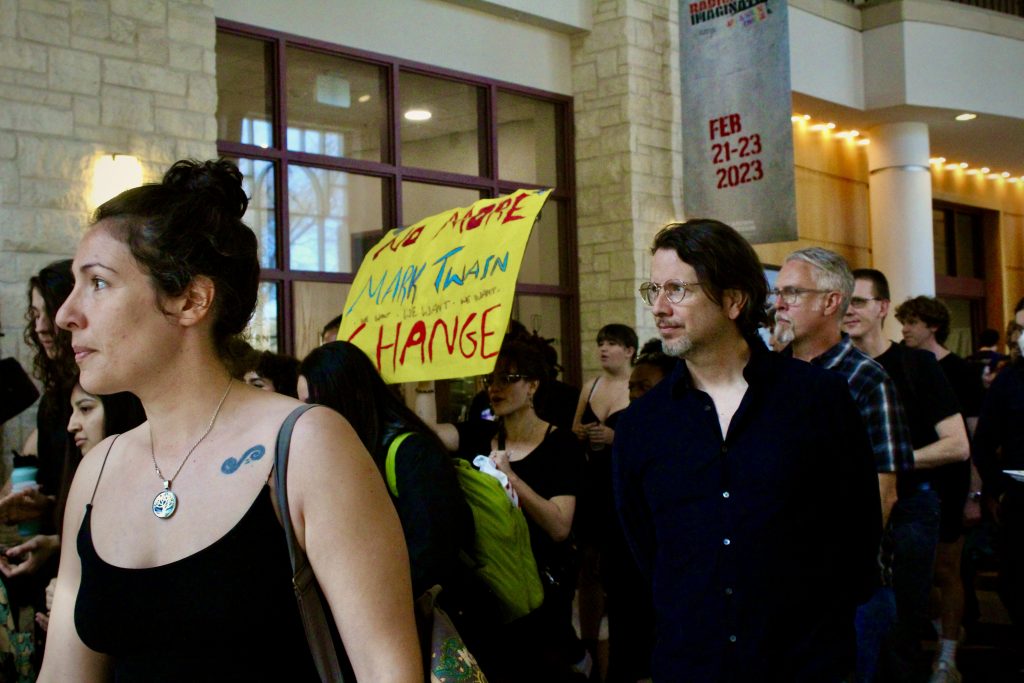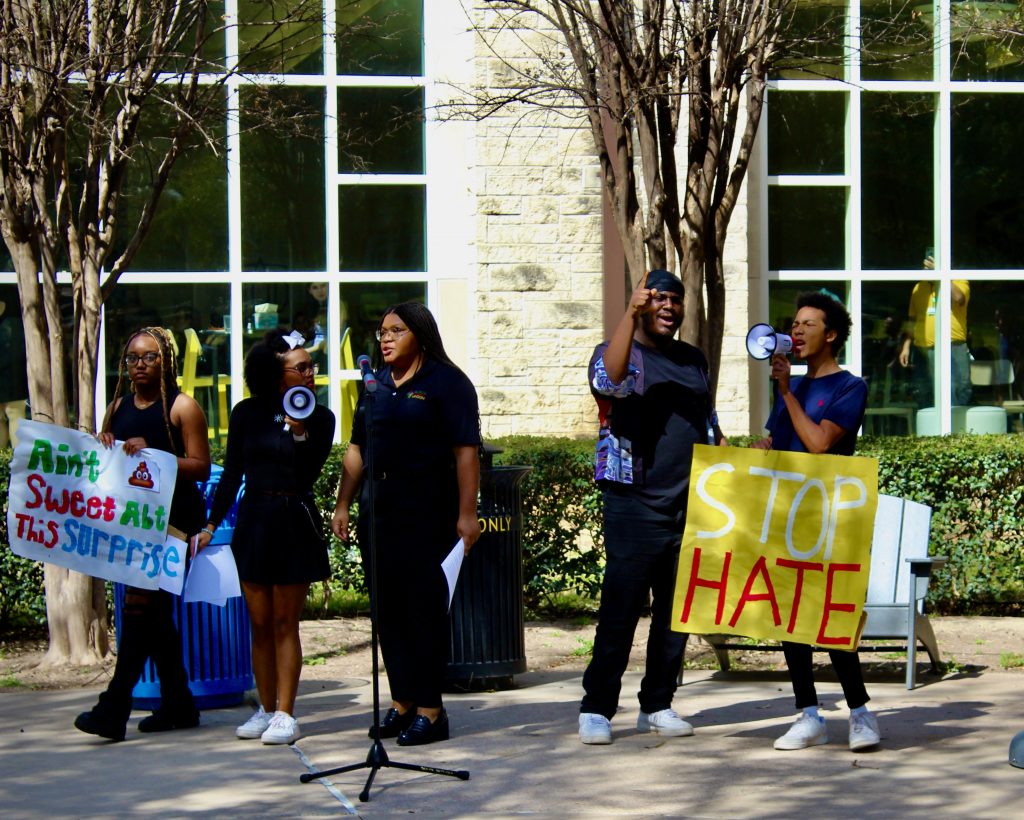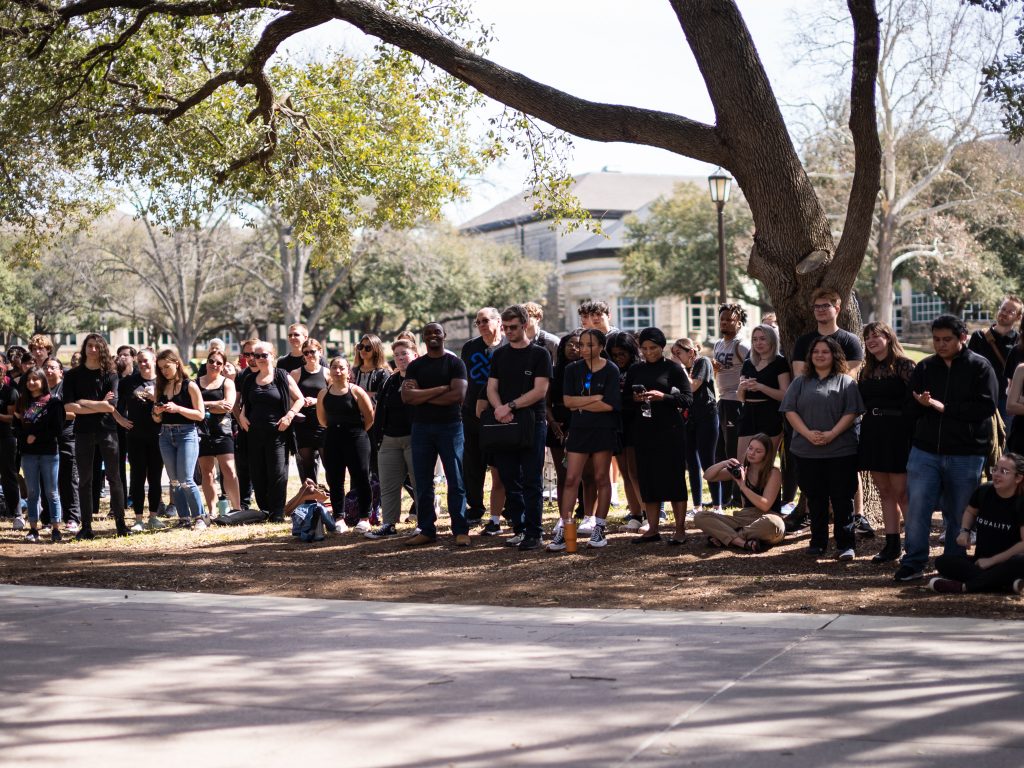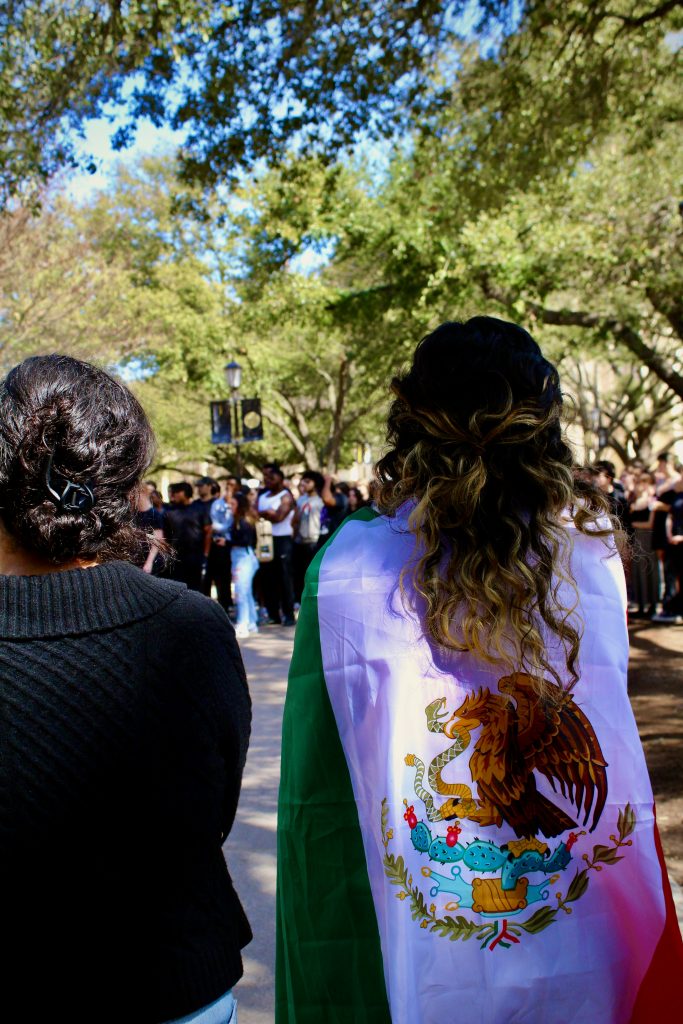Student-led Protest Over Administration’s Response to Recent Racially Motivated Harassment
Share
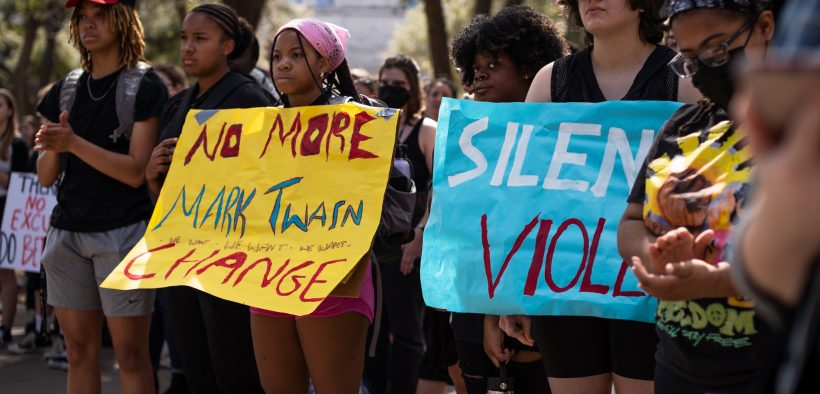
A stream of students, staff, and faculty, many dressed in black, gradually made their way from the Bishop’s Lounge to the Academic Mall, carrying signs and chanting: “No more Mark Twain. We want change!”
Last week, on February 23rd, during SU’s annual Brown Symposium, focused on Art and Politics and named “Radical Imagination,” there was a student-organized protest over what many students are calling the administration’s inadequate response to recent racist incidents, from the noose found in Ruter, to the anti-Semitic notes last semester, to the racial slurs written in Clark last week.
The response from the administration was to send emails informing students of actions taken by the President that, as Black Student Union (BSU) member Kellie Henderson put it, are “sugar-coating the racial terrorism against Students of color” and that “do not address the issues or soothe the anger and sadness of those affected.”

The event began with a choir, led by student vocalist Daniela Echevarria, singing in the Bishop’s Lounge. Students were then led to the Academic Mall, where speeches were given by the event organizers, including Rachel Thompson, Kellie Henderson, Taylor Bass, Raven Waugh, and Brianna Westmoreland.
Rachel Thompson expressed frustration over the administration’s lack of intervention in the issues on campus. The JEDI center’s workshops, trainings, and seminars can only do so much. Raven Waugh said: “We call on the university administration to take swift and decisive action to address racism on campus.”
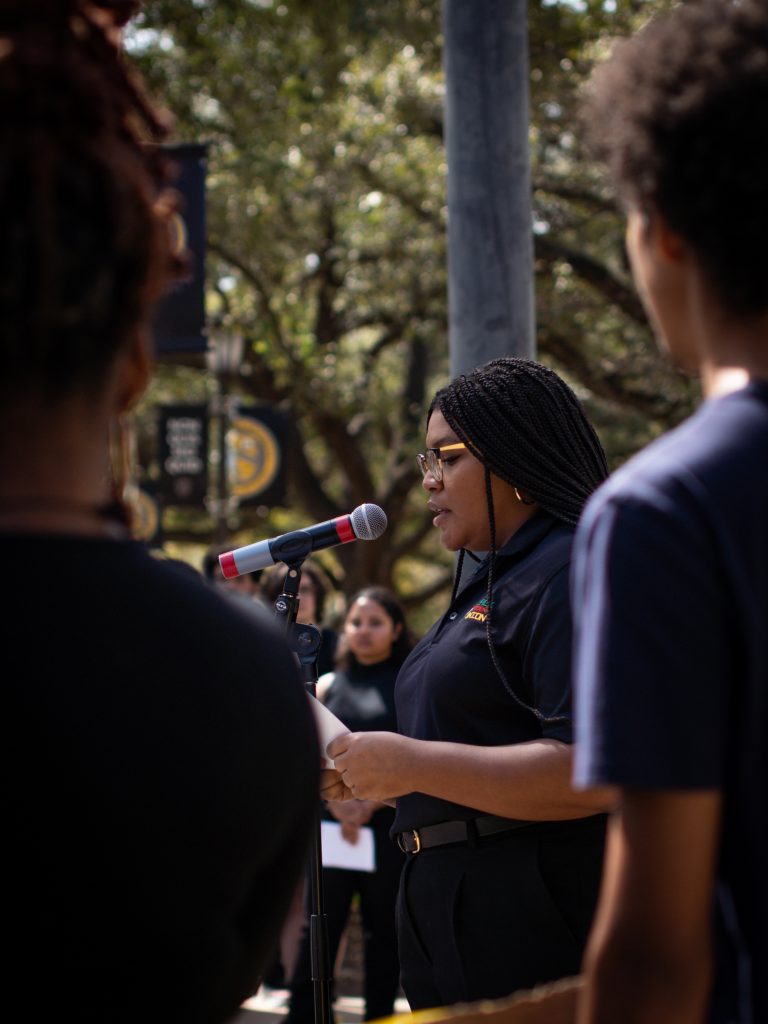
Photo by Bre Trevino
Rachel directly addressed the administration, urging them that when they do look for solutions, they should: “Ask professionals who are trained in DIBE (Diversity, Inclusion, Belonging, and Equity) initiatives. Do not assume what students of color need or want without asking them or asking your DIBE professionals.”
The mic then opened up to let SU students speak about how they felt about the administration’s response to what has been happening on campus in the last few months.
Austin Gordon spoke about how terrifying it was for him as a Black man to see the noose in Ruter, as well as how the administration did not follow up with him about photos he sent them. Mike Woodley said that seeing the noose in Ruter was one of the scariest experiences of his life; he went on to speak about what his experience is like being a Black man in Georgetown’s conservative environment.
DeVonte Rogers also spoke about his experience being a Black man in Georgetown, citing an experience of walking on campus and watching a White woman walking her dog on campus taking the long route to avoid him. Anderson Johnson said “some of us only have 94 feet, 100 yards, and a diamond.” Johnson later explained that some of the students of color only feel comfortable in areas zoned for sports on campus.
Kali Esquivel spoke about how students of color are tired of being put in the position of being tokenized as model minorities. Rogers spoke about this as well, saying: “We’re used for diversity. But where is the actual diversity?” He went on to talk about how Miss Ella is used by the school as evidence of their commitment to diversity. As Rogers said this, Miss Ella waved as she hung onto the tree by the Commons.
Aleena Khan read a poem challenging students to think about why they were at the protest, whether it be to end up on the news broadcast or to support the cause. The event was being covered not only by the Megaphone, but by the Williamson County Sun and the Univision 62 broadcasting network as well.
The closing statement made by Taylor Bass criticized the Adminstration. Bass said they need to heed what students, faculty, and staff said at the Race and Ethnicity Studies Symposium panel entitled Navigating Southwestern University as a Person of Color, that was held in January to talk about the University’s response to incidents last semester. Bass said:
“The perpetrators have to be held responsible and dealt with properly, and the most important and efficient way that happens is through school action. Not comforting words or a list of policies and programs in place, but actual enactment. We can’t have a panel discussing a disgusting and low-key threatening act and then continue on waiting for something to be done about it. I mean, how long were the students expected to sit back and be chill and just hope that someone is held responsible for these things?”
The next evening, the JEDI center hosted a President’s Corner in the Bishop’s Lounge. When asked about the protest, Trombley said, “I think you’re right. I think you’re right in a number of ways.” Trombley expressed that she was proud of the student body for coming together to protest the administration. She said that it was “the most real thing she has seen on campus.”
Photo Gallery:
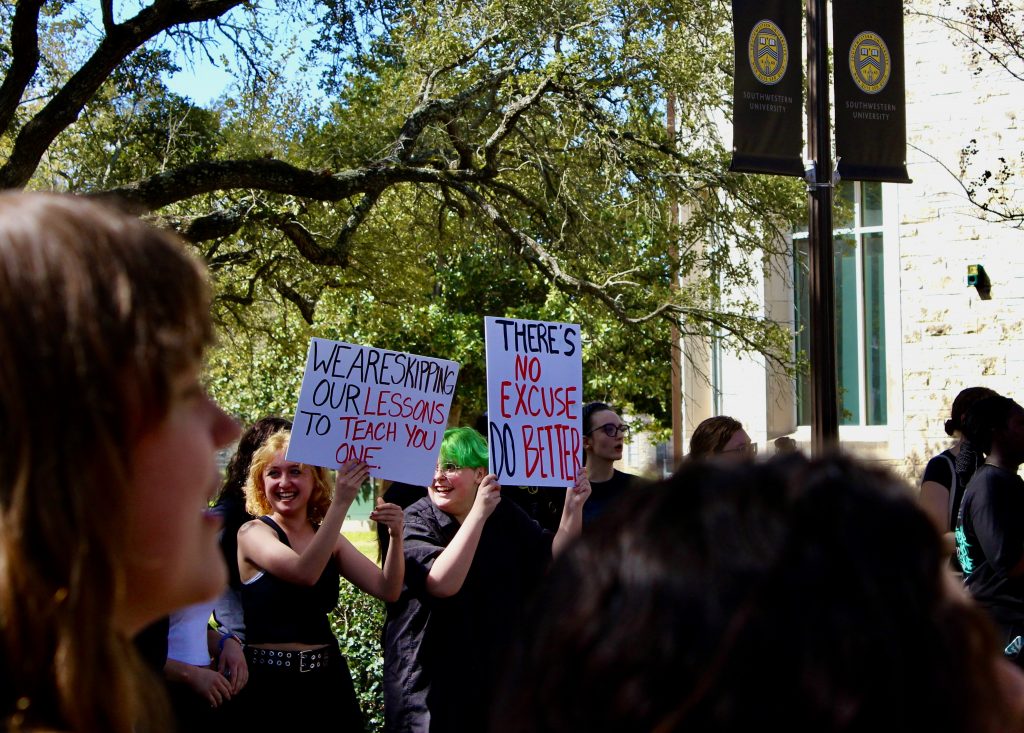
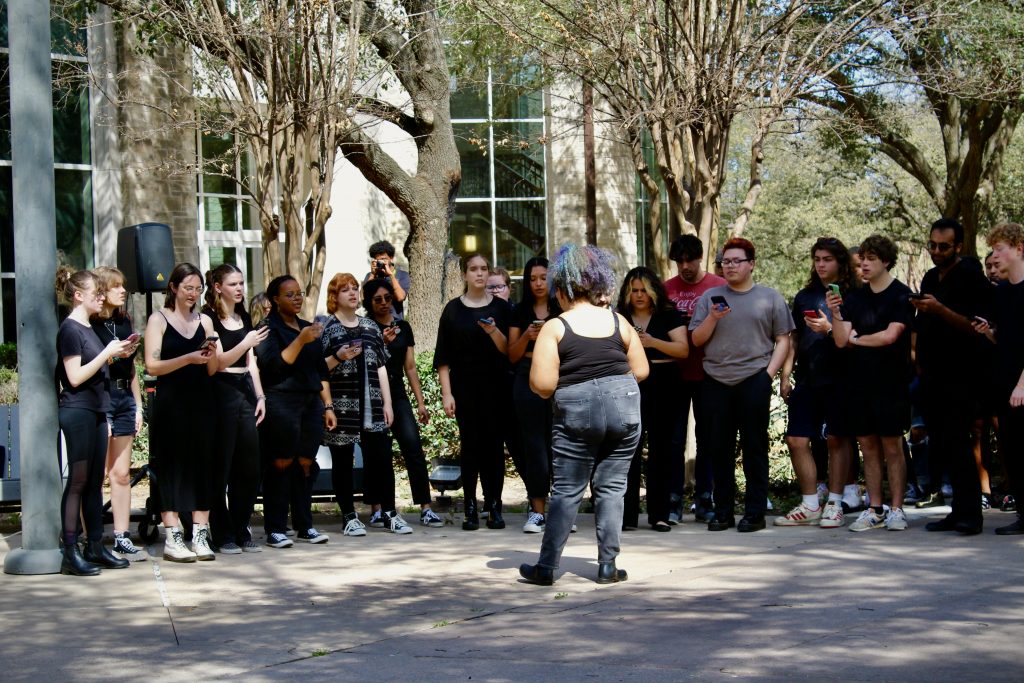
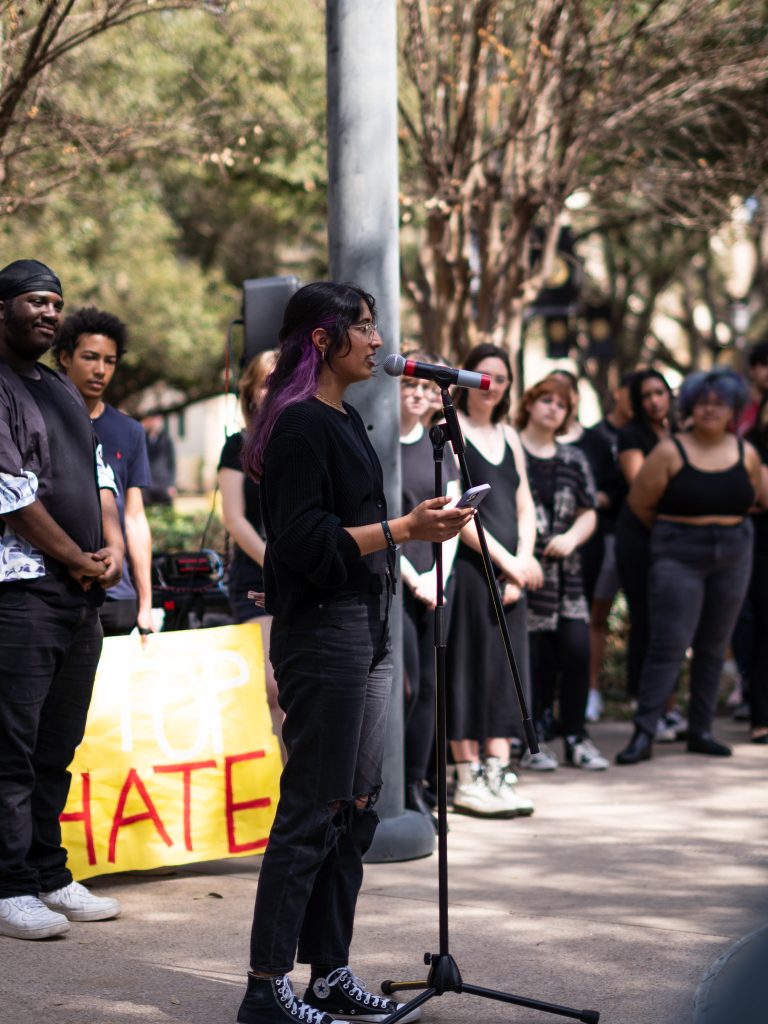
Aleena Khan Speaking 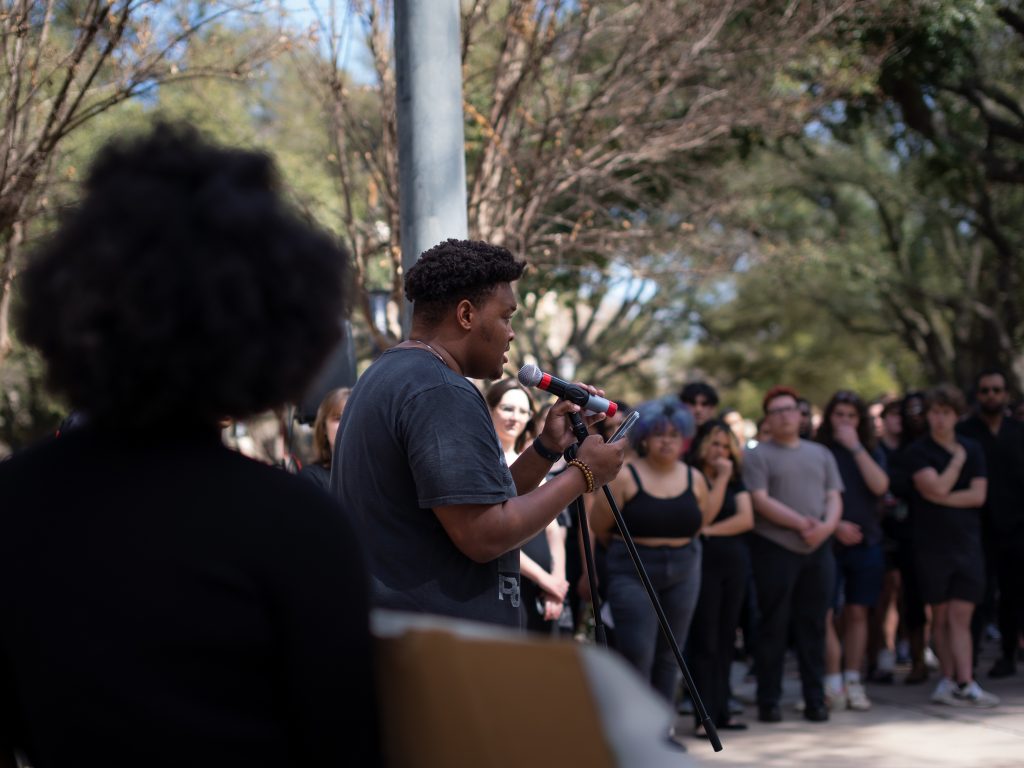
Anderson Johnson Speaking

